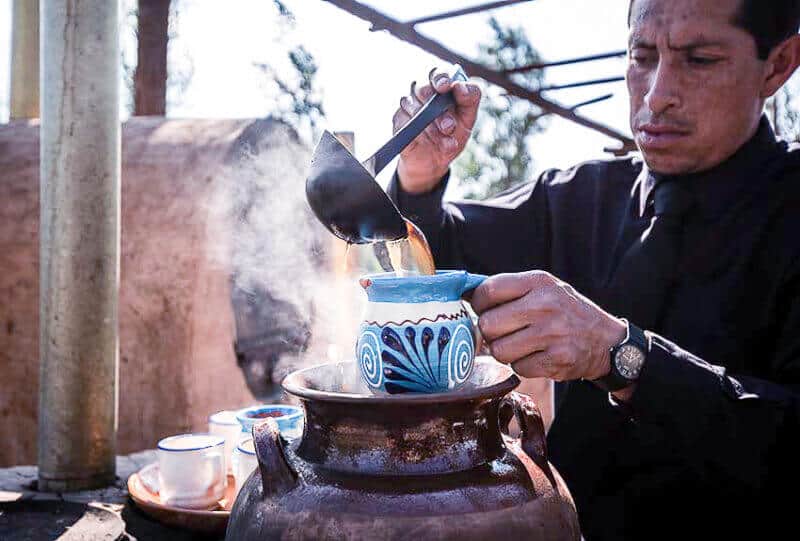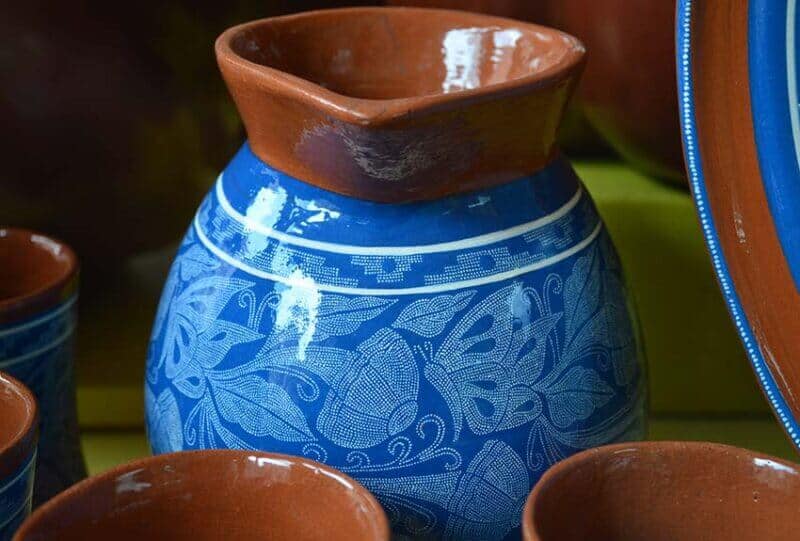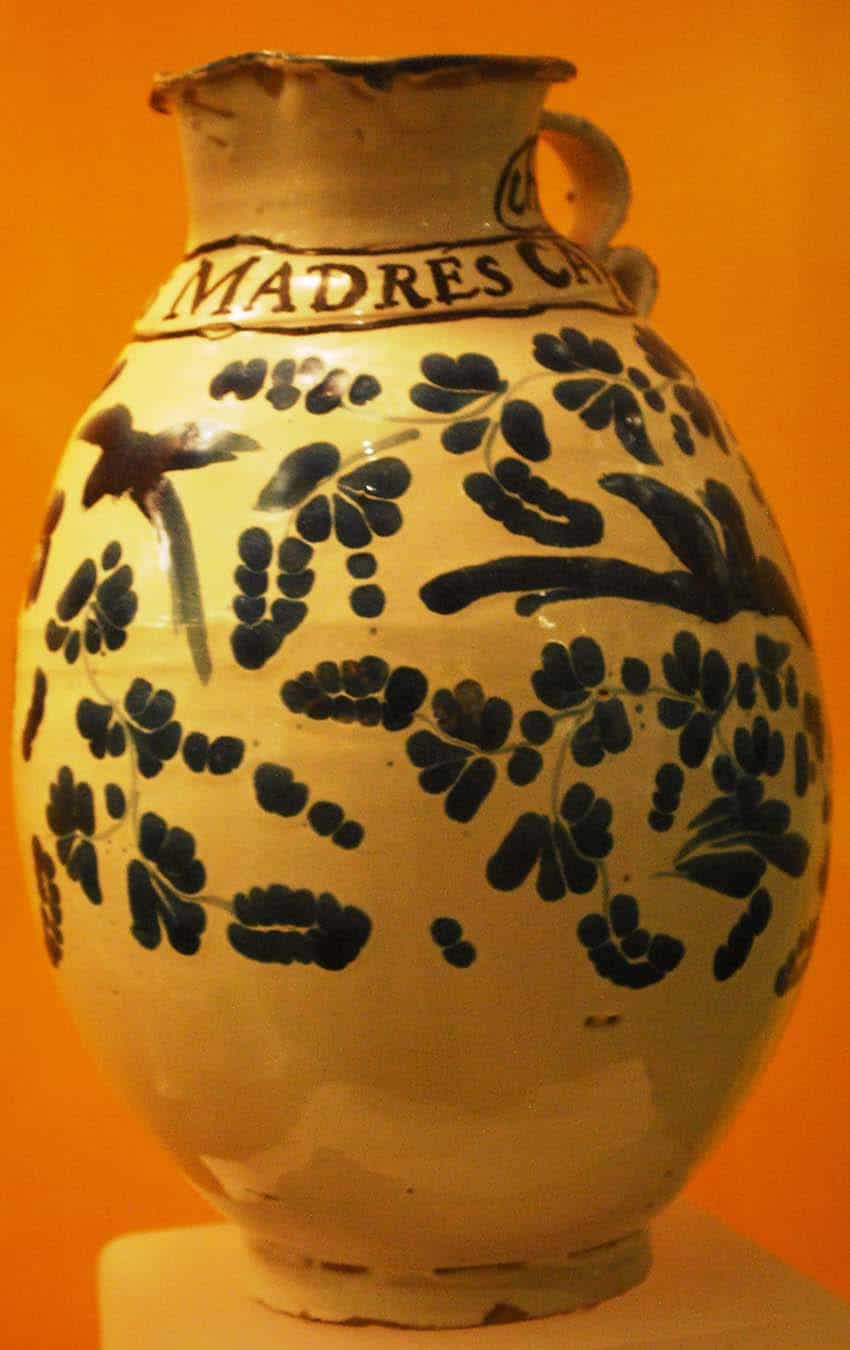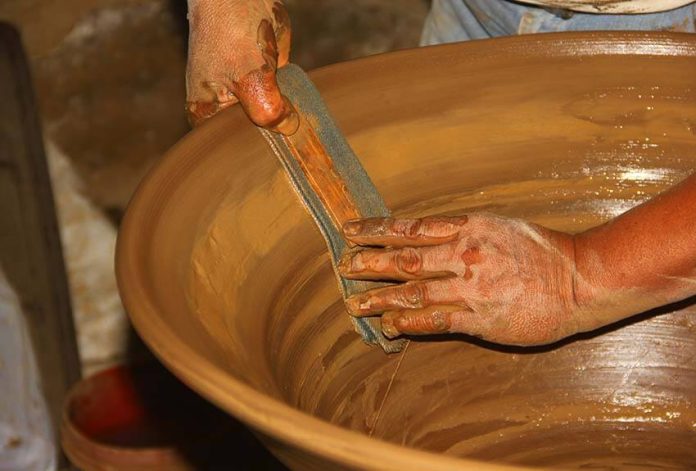You might think that at this point, everyone knows the danger of lead and that nothing you buy anymore contains it. But in Mexico, that is not quite the case.
Here, the main concern about lead comes not from paint or plumbing, but rather from glazed pottery.
Before the conquest, pottery in Mexico was unglazed. Mesoamericans burnished pieces before firing instead. European lead glaze has both practical and aesthetic qualities, but the making and the use of it over time can have serious health consequences.
Before I continue, let me stress here that the problem is with lead-glazed pottery, especially for wares related to the cooking, storage and serving of food. Unglazed pottery does not contain significant quantities of lead, if any, and those products that have lead glazes strictly for decorative purposes do not pose significant risks for the consumer since they do not eat or drink out of them.
Despite efforts to eliminate lead glazes, they are still widespread on traditional pottery. Any glazed piece bought in Mexico proper that is not certified as lead-free almost certainly has it. Pure Earth México, an NGO whose mission is to eliminate lead poisoning in the country, estimates that two of every 10 Mexican children have toxic levels in their blood because of the use of cooking and serving wares containing the substance.

Lead glazes are dangerous to both artisans and to those whose food touches the final product. For artisans, the danger comes from the fine powder that the glaze comes in, which is easy to inhale and stays in the environment long after it is mixed and applied.
The firing of the glazed piece also puts contaminants into the workshop’s air, which is often part of the artisan’s house, meaning that lead is all over where people work, sleep and eat. Studies in pottery towns such as Santa Fe la Laguna, Michoacán, show high blood-lead levels in the population, especially in women and children, as well as high rates of miscarriages and other health issues.
For the end user, the problem is the leaching of lead into food or beverages. This is particularly problematic for hot foods, acidic foods — think limes, tomatoes and tamarind — and foods stored for long periods.
Officially, Mexico banned lead use in most consumer goods in 1993, but enforcement is spotty at best. Both artisans and the domestic market still demand lead glaze; it is usually cheaper than non-lead counterparts.
Lead-free glazes need higher firing temperatures, requiring artists to replace or retrofit their kilns. Wares made with non-lead glaze often do not have the same shine or color brilliance that their customers are used to. Small potters work on very thin profit margins and do not have the resources to learn new skills, buy new equipment or look for new markets, even if they are significantly more profitable in the long run.
In addition, many Mexicans are not convinced that lead poses health risks. Its negative effects build up imperceptibly over time, and artisans here have used leaded glazes for centuries with no sudden, dramatic problems. For this reason, Mexican authorities (and to be fair, the rest of the world) did not take lead seriously until the later 20th century.

Finally, much of Mexico’s population is strongly traditional. In a June 2021 interview, Emma Yanes Rizo, director of the federal handcraft agency Fonart, said the main problem is “… the resistance to changing customs, such as [the use of] cazuelas [clay pots] to cook mole and other foods,” as well as the way artisans have worked for generations.
Fonart reports that even with grants and other support to use lead-free glazes, a number of artisans return to the leaded ones, especially if sales suffer. Today, still over half of the pottery produced in Mexico has dangerous levels of lead, with 10%–20% capable of inducing lead poisoning over time.
But the health problems associated with traditional glazed pottery are not the only reasons to get artisans to switch. Mexico’s exports of pottery have effectively been shut off since the adoption of NAFTA and other trade agreements meant that Mexico cannot meet regulatory requirements in the United States and other countries.
Domestically, markets have been squeezed more recently by the importation of cheaper and lead-free Asian ceramics. Given the cultural and economic importance of Mexico’s traditional pottery, the federal government and NGOs have worked on helping artisans make the switch to lead-free glazes.
These efforts began with the Group of One Hundred in 1991, an organization of intellectuals and artists who campaigned against the use of products with lead, especially traditional pottery. Fonart began its efforts soon afterward by developing non-lead glazes with adhesion temperatures as low as possible so that artisans would only need to make minimal modifications to existing kilns.
Later, the agency added programs to train artisans to work with new materials and new firing techniques, as well as acquire the needed equipment and supplies.

In 2003, Barro Sin Plomo, a Mexican NGO dedicated to helping pottery makers transition away from lead use, began operations, working extensively with Michoacán artisans by the end of the decade. They helped reconstruct or replace old kilns so that they could not only accommodate lead-free glazes but also be more energy efficient. A similar Mexican organization, Barro Aprobado, was begun in 2009 by culinary professionals concerned about lead issues in pottery.
Both organizations have worked to create markets for those artisans who change over to non-lead glazes. In the case of Barro Aprobado, it certifies that pieces are free of lead and that restaurants are using lead-free wares.
Slowly, traditional pottery with unleaded glazes is becoming more common as knowledge of their use spreads and new glazes are easier to use with acceptable results.
According to Mexican regulations, a piece is “lead-free” if the amount of glaze used on the product contains less than 0.5 milligrams of lead per liter. These regulations are enforced by the health and consumer agencies Cofepris and Profeco.
Such pottery is still not easy to find, but it is easier in upscale shops, Fonart outlets and the fanciest tourist areas. If you already own glazed cookware and want to know if it contains lead, there are simple tests you can do on the pieces, using vinegar or easy-to-buy chemicals. However, be aware that the test may damage the piece.
Both Barro Sin Plomo and Barro Aprobado have a presence online, and it is possible to buy pottery through them. Barro Aprobado just opened its first in-person store in Mexico City in 2021 and lists artisans making lead-free wares by state.
Leigh Thelmadatter arrived in Mexico 18 years ago and fell in love with the land and the culture in particular its handcrafts and art. She is the author of Mexican Cartonería: Paper, Paste and Fiesta (Schiffer 2019). Her culture column appears regularly on Mexico News Daily.
